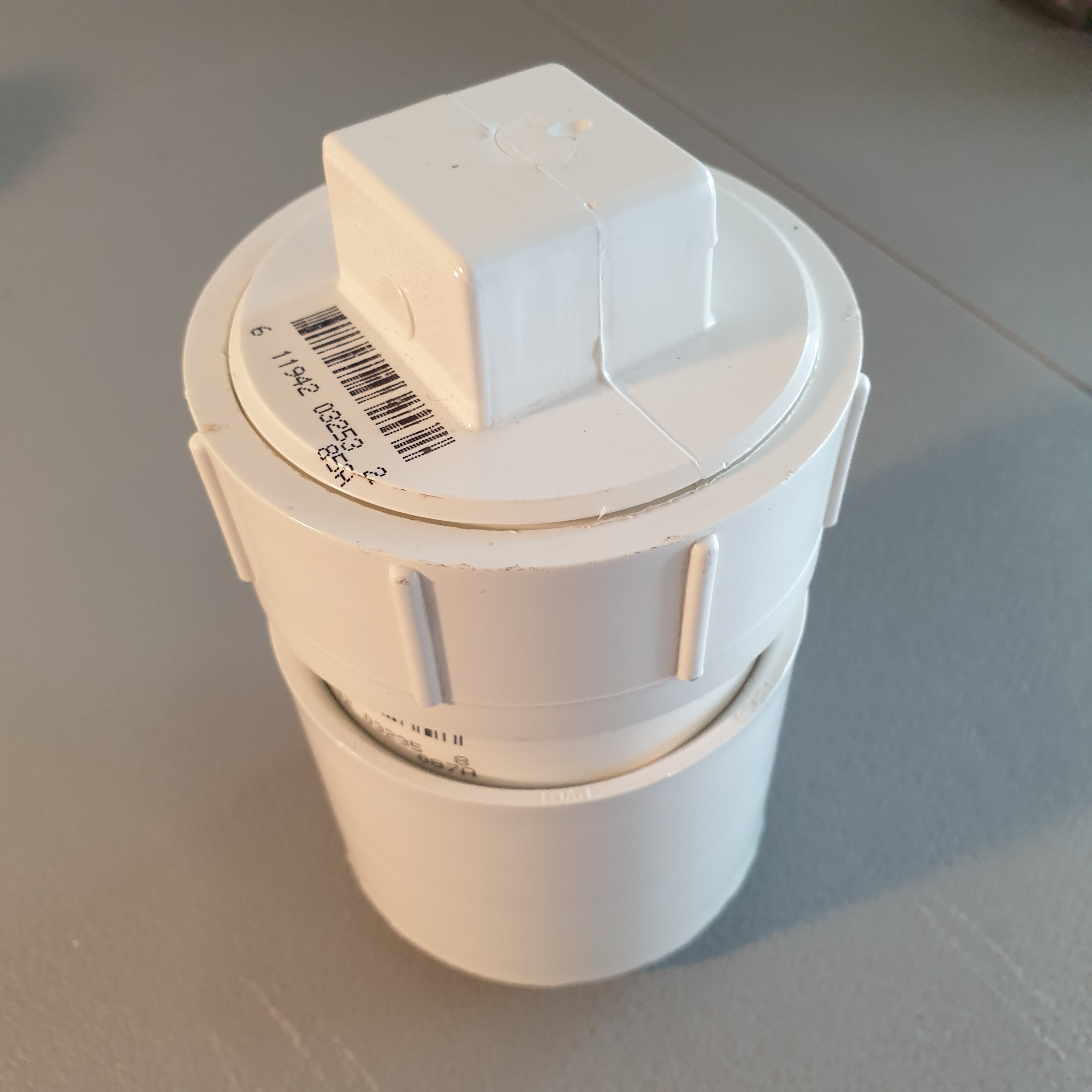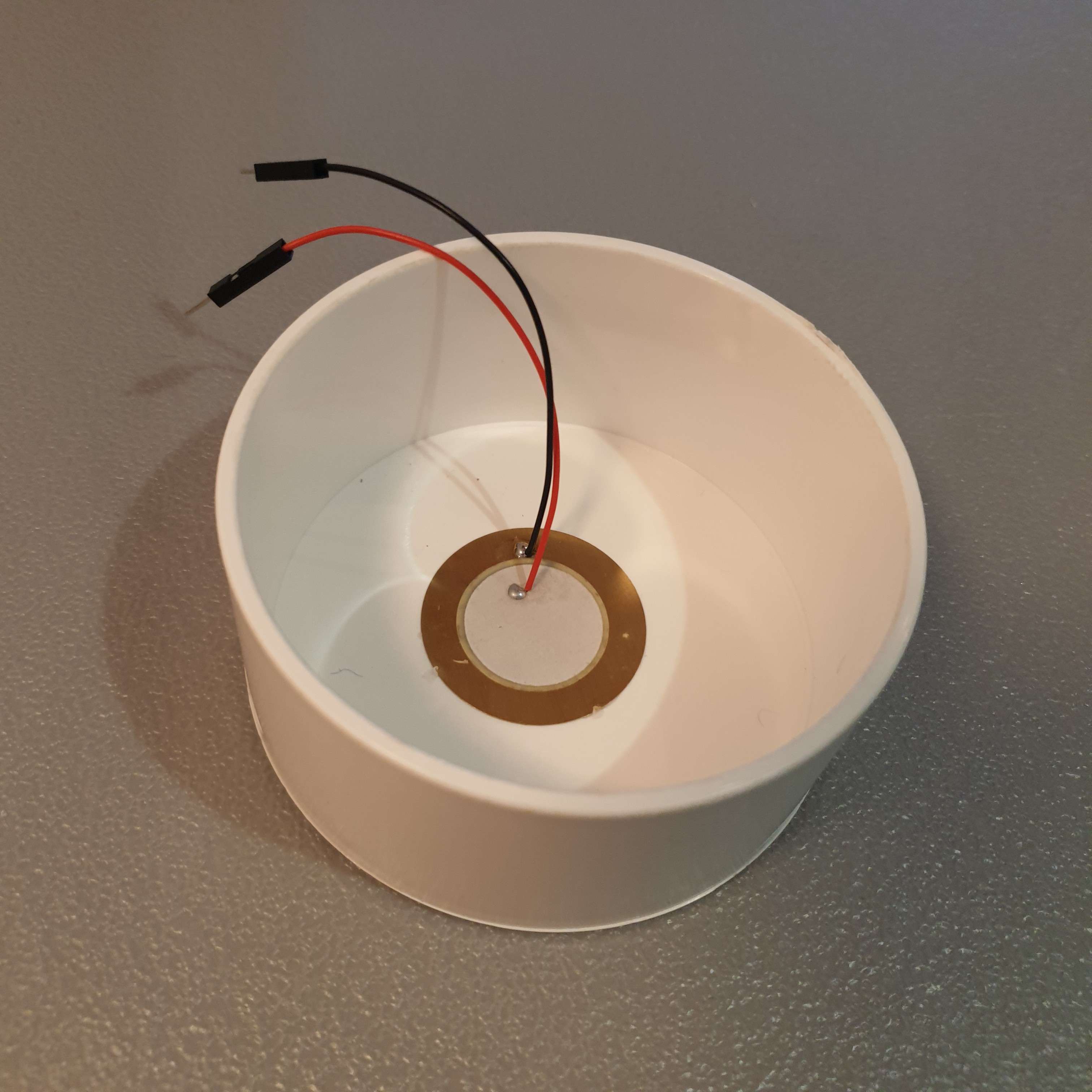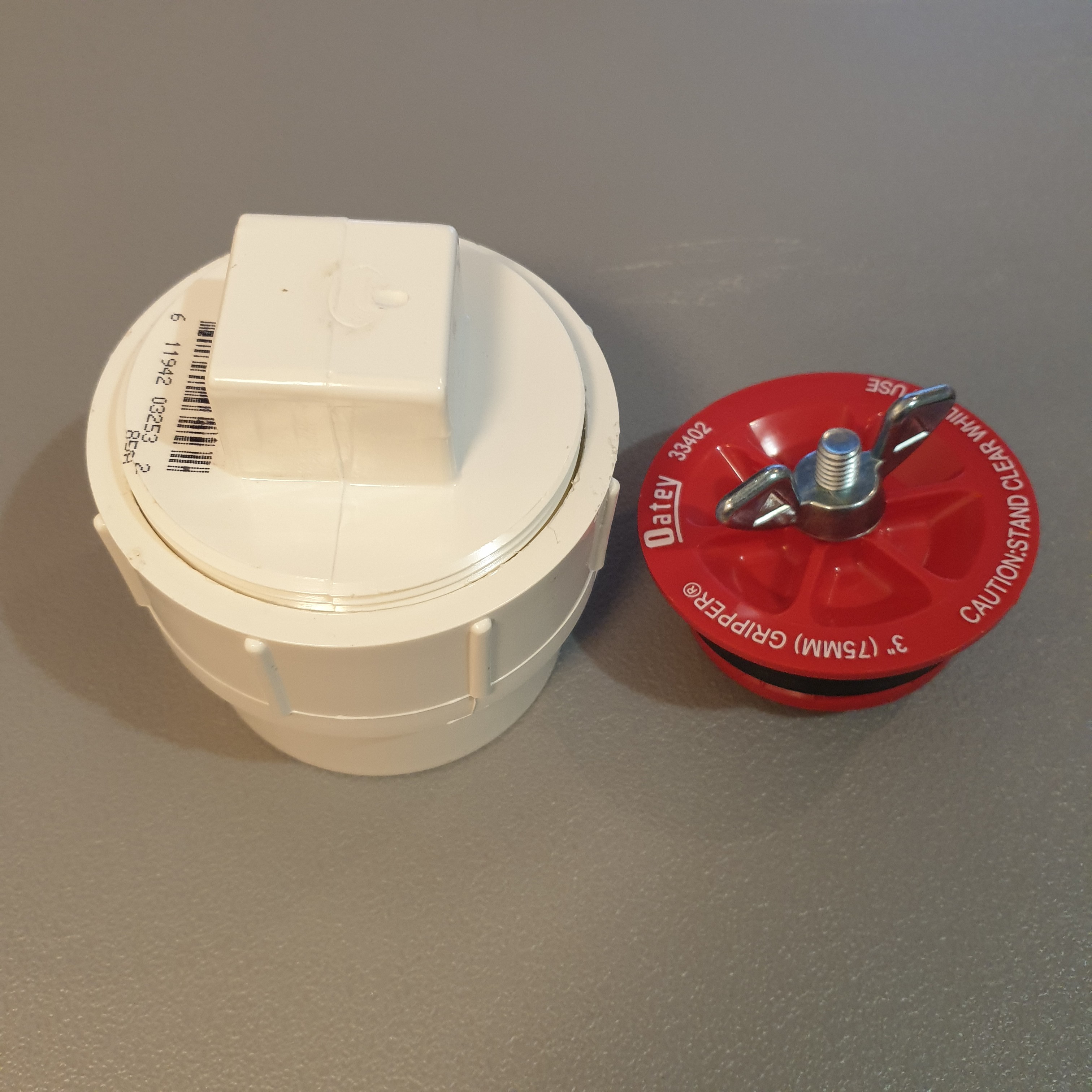
I have transitioned to a PVC pipe fitting enclosure for the BoatDetect device. The previous enclosure, a 1000ml wide mouth water bottle, did not have a flat surface to mount the piezo diaphragm to. I considered pouring a small amount of epoxy resin in the bottom of the 1000ml water bottle to create a flat surface, but decided against it because of the added cost and hassle of working with epoxy. At $9.60, the PVC enclosure is only $3 more expensive than the 1000ml water bottle. It makes up for the added cost with a wider access port and is potentially easier to source than the bottle. The wider access port allows a little more space for the electronics assembly and certainly will make it easier to access the batteries and SD card.

I superglued the piezo diaphram to the inside surface of the bottom plug. It did take me a while to find a PVC fitting that had a flat surface to mount the piezo to. When I get around to developing a build-it-yourself guide, I will recommend that builders start by finding a PVC fitting with the flat surface and build up the rest of the enclosure around that fitting as I have done here.

I have some reservations whether the DWV (drain, waste, vent) threaded connection will be be able to hold pressure at depth. As the name "DWV" implies, they are not used for high pressure PVC installations. On top of that, the threaded connection would also likely require that a thread sealant be applied and inspected every time the device is opened up. The alternative is a wingnut compression pipe plug which does have some design history with other DIY underwater enclosures. I just checked price and looks like the compression pipe plug is actually a little cheaper than the combined price of both the DWV threaded plug and threaded spigot fittings. It would require a small length of PVC pipe to fit in but that ought to be cheap. Well then, the compression pipe plug is roughly equivalent on cost and a clear winner on both pressure rating and ease of installation/removal. I will buy the small section of pipe needed this week and get the enclosure glued together for testing.
 John Opsahl
John Opsahl
Discussions
Become a Hackaday.io Member
Create an account to leave a comment. Already have an account? Log In.